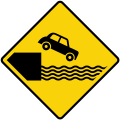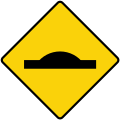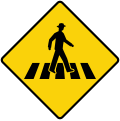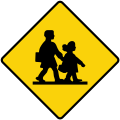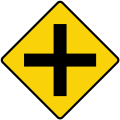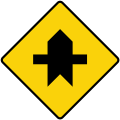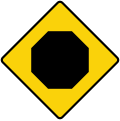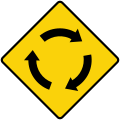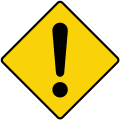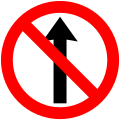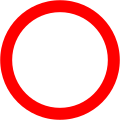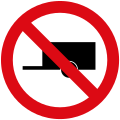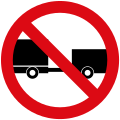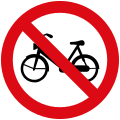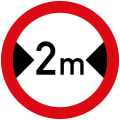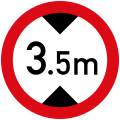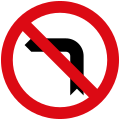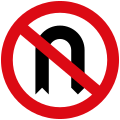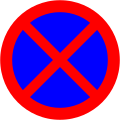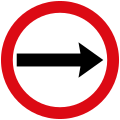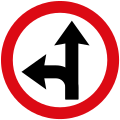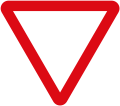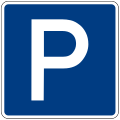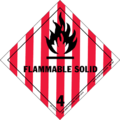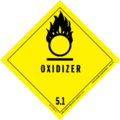
Road signs in Sweden are regulated in Vägmärkesförordningen, VMF (2007:90), and are to be placed 2 metres from the road with the sign 1.6 m from the base for motorized roads. Except for route numbers, there are a maximum of three signs on a pole, with the most important sign at the top. All signs have a reflective layer added on selected parts of the sign as is custom in European countries; most larger signs also have their own illumination.
Road signs in Iran are regulated in the INSO 14815-1 standard. They generally follow the Vienna Convention on Road Signs and Signals.

Road signs in Israel are regulated by the Ministry of Transportation in the Division of Transportation Planning, most recently set forth in June 2011.

Road signs in Pakistan are modelled on the British road sign system, with an exceptional difference being that they are bilingual and contain messages in Urdu, the national language, and English, and in some cases, the local regional or provincial languages. Pakistan drives on the left side of the road and follows the left-hand traffic system. Vehicles must be overtaken on their right.
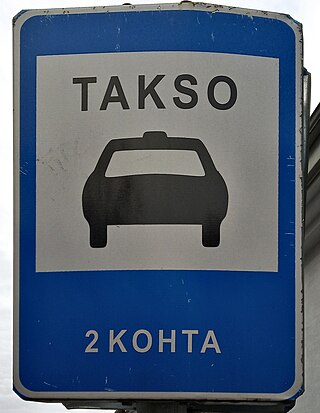
Road signs in Estonia ensure that transport vehicles move safely and orderly, as well as to inform the participants of traffic built-in graphic icons. These icons are governed by the Vienna Convention on Road Traffic and Vienna Convention on Road Signs and Signals. The system is covered in Liiklusmärkide ja teemärgiste tähendused ning nõuded fooridele and the standards document EVS 613:2001 Traffic signs.

Bosnia and Herzegovina is a signatory to the Vienna Convention on Road Signs and Signals. Therefore, road signs do not differ much from the rest of Europe, such as Croatia, Slovenia, Serbia and North Macedonia. Ministry of Transportation of Bosnia and Herzegovina regulates them. Bosnia and Herzegovina drives on the right as with the rest of Europe, except for Cyprus, Ireland, Malta and the United Kingdom. Bosnian and Herzegovinan road signs have two scripts, Latin and Cyrillic script.
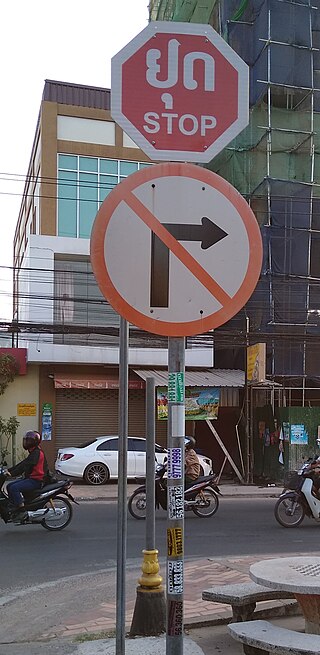
Road signs in Laos generally follow those used in most European countries as set out in the Vienna Convention on Road Signs and Signals. Despite this, the country itself has never signed the Vienna Convention on Road Signs and Signal. Inscriptions on traffic signs are in Lao, the national language of Laos. However, English is also used for stop and important public places such as tourist attractions, airports, railway stations, and immigration checkpoints. Both Lao and English are used on directional signage.
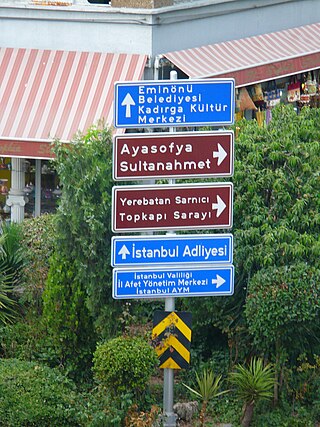
Turkey conform to the general pattern of those used in most other European countries and set out in the Vienna Convention on Road Signs and Signals. They are regulated by the Trafik İşaretleri Elkitabi.
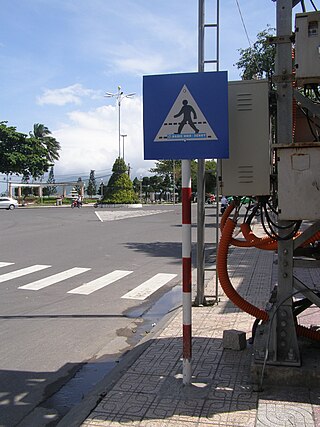
Road signs in Vietnam follow Chinese and French road signs. Some signs are written in both Vietnamese and English. The signs are prescribed by the Ministry of Transportation of Vietnam.

Road signs in Armenia are similar to the signs of other post-Soviet states and most European road sign systems. Armenia is a signatory of the Vienna Convention on Road Traffic and the Vienna Convention on Road Signs and Signals. The Ministry of Transport regulates these icons, while the police enforces them. Road signs ensure transport vehicles move safely and orderly, as well as, to inform both pedestrians and motorists of traffic rules.

Road signs in Georgia are similar to the road sign system of other post-Soviet states that ensure that transport vehicles move safely and orderly, as well as to inform the participants of traffic built-in graphic icons. However, some road signs look a bit different from Soviet ones and closer to the European ones. These icons are governed by the Vienna Convention on Road Traffic and Vienna Convention on Road Signs and Signals.

Road signs in United Arab Emirates are modelled on the British road sign system that are regulated by the Roads and Transport Authority (RTA) Dubai and Department of Transport (DoT) Abu Dhabi. The English language typeface is Transport and the Arabic language typeface is Naskh.

The road signs, used on the Serbian road network, are regulated by the "Regulation of Traffic Signs", which was last time modified in 2017.

Road signs in Portugal are governed by the "Regulamento de Sinalização do Trânsito" of the Republic of Portugal.
Road signs in North Macedonia are regulated in Правилник за сообраќајните знаци, опрема и сигнализација на патот / Pravilnik za soobraḱajnite znaci, oprema i signalizacija na patot.
Road signs in Latvia conform to the general pattern of those used in most other European countries. They are regulated in Ceļu satiksmes noteikumi and the standards documents LVS 77–1:2016 "Ceļa zīmes. 1. daļa: Ceļa zīmes", LVS 77-2:2016 "Ceļa zīmes. 2. daļa: Uzstādīšanas noteikumi" and LVS 77-3:2016 "Ceļa zīmes. 3. daļa: Tehniskās prasības" in conformity with the 1968 Vienna Convention on Road Signs and Signals. Latvia acceded to the Vienna Convention on Road Signs and Signals on October 19, 1992.

Road signs in Cuba are regulated in Ley No. 109 Código de Seguridad Vial and generally conform to the 1968 Vienna Convention on Road Signs and Signals.

Road signs in Macau are regulated in the Regulamento do Trânsito Rodoviário and standardised by the Secretary for Transport and Public Works. Due to being a former Portuguese territory, the road signage in Macau is similar to road signs used in Portugal until 1998, with the addition of traditional Chinese characters and some signs reversed to reflect driving on the left. After the transfer of sovereignty over Macau in 1999, the old style of Portuguese road signs was retained and still used. Road signs conform to the general pattern of those as set out in the Vienna Convention on Road Signs and Signals, although Macau is not a signatory to it, but Portugal is. Macau drives on the left.

Road signs in Romania are regulated in Regulamentul de aplicare a Ordonanţei de urgenţă privind circulaţia pe drumurile publice.
Road signs in Angola are heavily modelled on road signs in Portugal, since Angola is a former Portuguese colony. They are regulated in Código de Estrada and conform to the general pattern of road signs as set out in the Vienna Convention on Road Signs and Signals. Despite this, Angola is not a signatory to this convention, but Portugal is.











